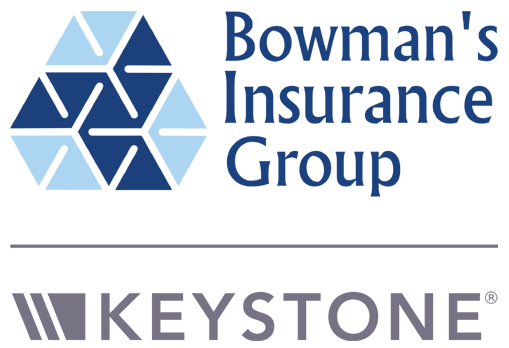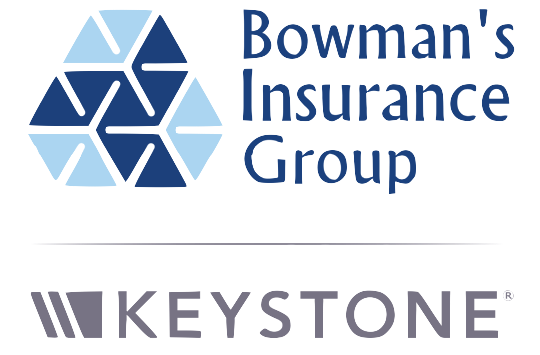
Insurance deductibles are an essential aspect of business insurance policies, and understanding them is crucial for Pennsylvania business owners. Deductibles influence the cost of premiums and the financial responsibility a business bears when filing a claim. In this article, we will explore the concept of insurance deductibles, their importance for businesses, the different types available, guidelines for selecting the right deductible, Pennsylvania-specific regulations, and answer frequently asked questions related to this topic.
Defining Insurance Deductibles
At its core, an insurance deductible represents the amount of money that a policyholder must pay out of pocket before their insurance coverage kicks in. This means that when a loss occurs, the deductible is subtracted from the total claim amount to determine the insurance payout.
The Basics of Insurance Deductibles
Insurance deductibles can vary significantly depending on the policy and coverage type. Typically, deductibles are applied to property, health, and liability insurance policies. Understanding the basics of deductibles is essential, as they play a vital role in the insurance process.
In most cases, deductibles can be flat amounts or percentages of the insured value. A flat deductible is a specific dollar amount that must be paid by the business before the insurer pays any claims. For instance, if a business has a flat deductible of $1,000 and suffers a loss of $5,000, they will be responsible for the first $1,000, and the insurer will cover the remaining $4,000.
On the other hand, percentage deductibles are often calculated based on the total insured value of the property. For example, if a business has a 5% deductible on a property valued at $200,000, the deductible would amount to $10,000. This type of deductible is commonly seen in policies for natural disasters, where the insured value can fluctuate significantly based on market conditions.
How Insurance Deductibles Work
Understanding how deductibles operate is vital for effective risk management. When a claim is made, the insurer assesses the total loss and applies the deductible. For example, if a business incurs a $10,000 loss with a $2,000 deductible, the insurance company will pay $8,000 after the deductible is applied.
Furthermore, businesses can choose higher deductibles to lower their premium costs. However, this choice comes with the risk of paying more out of pocket in the event of a loss. Balancing deductible amounts with premium costs is a critical consideration for businesses seeking to maintain their financial health.
It's also important to note that different types of insurance may have different deductible structures. For instance, health insurance policies might include separate deductibles for individual and family coverage, or even for specific services like hospitalization versus outpatient care. This complexity necessitates a thorough review of policy documents to ensure that businesses and individuals are fully aware of their financial responsibilities in the event of a claim. Additionally, some insurers may offer deductible waivers for certain types of claims, which can be an attractive feature for policyholders looking to minimize their out-of-pocket expenses during unexpected events.
Importance of Insurance Deductibles for Businesses
Insurance deductibles are not just a minor detail—they can significantly impact a business’s financial stability and risk exposure. Understanding their importance is crucial for effective financial planning and risk management.
Financial Implications of Deductibles
Deductibles directly affect the cost of insurance premiums. Typically, higher deductibles lead to lower premium costs, which may seem attractive at first. However, businesses must be prepared to handle larger out-of-pocket expenses in case a claim arises. This balance is essential in ensuring that businesses do not face unmanageable financial burdens during difficult times.
Moreover, businesses should consider their cash flow and reserve funds when determining their ideal deductible. A company with stronger financial resources may opt for a higher deductible, while businesses with tighter budgets may need to choose a lower deductible to mitigate risk. This decision-making process can be further complicated by the nature of the industry; for example, a manufacturing company may face different risks compared to a tech startup, influencing their deductible strategy.
Risk Management and Deductibles
Using deductibles as a risk management tool can help businesses minimize potential losses. By selecting appropriate deductibles, businesses can tailor their insurance policies to align with their risk tolerance and operational needs.
Some businesses may choose to increase their deductibles as a strategy to reduce overall insurance costs. However, this decision should be carefully considered, as it entails greater risk in the event of an unforeseen incident. As a result, companies should conduct thorough risk assessments to inform their deductible choices. Additionally, businesses can benefit from consulting with insurance professionals who can provide insights into industry trends and help them understand the implications of various deductible levels on their specific operations.
Furthermore, it is essential for businesses to regularly review their insurance policies and deductibles in light of changing circumstances, such as growth, new product lines, or shifts in market conditions. As a business evolves, so do its risks, and what may have been an appropriate deductible in the past might not serve the company well in the future. Staying proactive in this regard can lead to better financial outcomes and enhanced resilience against potential setbacks.
Types of Insurance Deductibles
There are various types of insurance deductibles. Understanding these options and their implications is essential for Pennsylvania businesses looking to optimize their insurance strategies.
Flat Deductibles
A flat deductible is a set dollar amount that the policyholder must pay before the insurance pays any claims. This type of deductible is straightforward and easy to understand. For many businesses, choosing a flat deductible can simplify the budgeting process and make it easier to plan for potential costs.
For example, if a business has a flat deductible of $1,500 and files a claim for $10,000, they will only receive $8,500 from the insurer. This clarity can aid business owners in understanding their financial obligations in the case of a claim. Additionally, flat deductibles can provide a sense of predictability, allowing businesses to allocate funds more effectively, especially in industries where claims may be frequent or expected.
Moreover, businesses should consider how a flat deductible aligns with their overall risk management strategy. For instance, companies that have a history of low claims may find that opting for a higher flat deductible can reduce their premium costs, ultimately resulting in savings over time. This approach can be particularly beneficial for small businesses that want to maintain cash flow while still protecting their assets.
Percentage Deductibles
Percentage deductibles are calculated based on the insured value of the property or assets. This means that rather than a fixed dollar amount, the deductible increases with the value of the property. For example, if a business has an insurance policy with a 5% deductible on a $200,000 property, the deductible would be $10,000.
While percentage deductibles can sometimes lead to lower upfront premium costs, they can also create higher out-of-pocket expenses, particularly for businesses with more valuable assets. Therefore, it is essential to comprehend the implications of each deductible type thoroughly. Businesses must evaluate their asset values and potential risks to determine if a percentage deductible is the right choice for their specific situation.
Furthermore, percentage deductibles are often more common in certain types of insurance, such as property and natural disaster coverage. This means that businesses in areas prone to disasters like floods or earthquakes should pay special attention to how these deductibles work. Understanding the potential financial impact of a percentage deductible can help businesses prepare for worst-case scenarios, ensuring they are not caught off guard when a claim arises. Additionally, businesses may want to consult with insurance professionals to tailor their policies to best fit their unique risk profiles and financial capabilities.
Choosing the Right Deductible for Your Business
Selecting the right deductible for your business is a critical decision that requires careful consideration of several factors. It is essential to align your choice with your company’s financial strategy and risk appetite.
Factors to Consider
When deciding on a deductible, businesses should evaluate factors such as industry type, claim history, financial strength, and overall risk exposure. For instance, a business in a high-risk industry may opt for a lower deductible to mitigate potential claim costs, while a low-risk business may be comfortable with a higher deductible.
Other considerations include cash flow and the company's ability to pay the deductible in case of an unexpected event. It's crucial to assess your company's financial health and ensure you have reserves for potential claims. Additionally, understanding the specific risks associated with your industry can provide valuable insights. For example, a construction company might face unique liabilities that necessitate a different approach compared to a tech startup, which may have fewer physical risks but could be vulnerable to data breaches.
Balancing Premiums and Deductibles
Finding the right balance between premiums and deductibles is often the key to effective insurance management. In many cases, higher deductibles result in lower premiums. However, businesses must weigh the potential cost savings against the financial risks associated with higher out-of-pocket expenses during a claim.
A comprehensive risk assessment can help businesses make informed decisions on whether to select a higher deductible or a lower one, depending on their operational needs and financial capacity. It's also beneficial to consult with an insurance advisor who can provide tailored advice based on your specific circumstances. They can help you navigate through the complexities of insurance policies, ensuring that your deductible aligns with both your risk management strategy and long-term business goals. Furthermore, regularly reviewing your deductible choice as your business evolves can ensure that it continues to meet your needs effectively, adapting to changes in your operations or market conditions.
Pennsylvania-Specific Insurance Deductible Regulations
Pennsylvania businesses must navigate specific regulations regarding insurance deductibles. Understanding these regulations is essential for compliance and optimal insurance management.
State Laws and Guidelines
Pennsylvania’s insurance laws govern how deductibles are structured and implemented. The Pennsylvania Insurance Department provides guidelines that dictate maximum limits for certain types of deductibles, particularly for health and auto insurance policies.
Business owners should familiarize themselves with these regulations to ensure they are compliant while also optimizing their insurance policies. Consulting with a local insurance professional can provide valuable insights into the legal landscape surrounding deductibles. Additionally, it is crucial for businesses to stay updated on any changes in legislation, as the insurance landscape can shift due to new laws or amendments that may impact deductible structures.
Impact on Pennsylvania Businesses
The way deductibles are structured in Pennsylvania can affect businesses’ insurance costs and claims processes. Higher deductibles with lower premiums can be appealing, allowing businesses to conserve cash. However, this strategy can also increase the financial burden in the event of a substantial claim.
Typically, policyholders in Pennsylvania should carefully analyze their options and consult with industry experts who understand the nuances of state regulations and how they apply to individual business scenarios. Moreover, businesses should consider their unique risk profiles when selecting deductibles. For instance, a company with a stable financial footing might opt for a higher deductible to benefit from lower premiums, while a newer or smaller business may prefer a lower deductible to minimize out-of-pocket expenses during unexpected claims. Understanding the balance between risk tolerance and potential savings is vital for making informed insurance decisions.
Frequently Asked Questions about Insurance Deductibles
With insurance deductibles being a complex topic, many business owners have questions. Here, we address some common misconceptions and provide expert insights into frequently asked questions.
Common Misconceptions
A prevalent misconception is that having a higher deductible always means better savings on premiums. While this can be true, it does not account for the potential increased risk and higher out-of-pocket costs during claims. Businesses must consider their unique situations and risk profiles when making deductible decisions. For instance, a small business with limited cash flow may find it challenging to cover a high deductible in the event of a claim, which could lead to financial strain. Therefore, it is crucial to evaluate not only the immediate savings on premiums but also the long-term financial implications of your deductible choice.
Another misconception is that all types of insurance have the same deductible structures. This is not the case; different policies can have varying deductible types and amounts, necessitating thorough research when selecting coverage. For example, health insurance often features a different deductible system compared to property insurance, with some policies incorporating co-pays and out-of-pocket maximums. Understanding these distinctions can help business owners make more informed decisions that align with their specific needs and circumstances.
Expert Answers to Your Queries
If you have specific questions about insurance deductibles, reaching out to an insurance professional is a wise decision. They can provide tailored advice based on your business needs and clarify the nuances of your insurance policies. Additionally, they can help you assess your risk tolerance and guide you through the process of comparing different insurance options. This personalized approach ensures that you select a policy that not only meets your coverage requirements but also fits within your financial strategy.
Remember, understanding your deductible options and making informed choices can significantly influence your business's financial health and risk management strategy. With careful planning, Pennsylvania business owners can navigate the complexities of deductibles to better protect their interests. Moreover, staying updated on industry trends and changes in insurance regulations can further enhance your understanding of deductibles and their impact on your business. Engaging in regular reviews of your insurance policies can help you adapt to evolving needs and ensure that you are always adequately covered, minimizing potential risks and maximizing your peace of mind.













